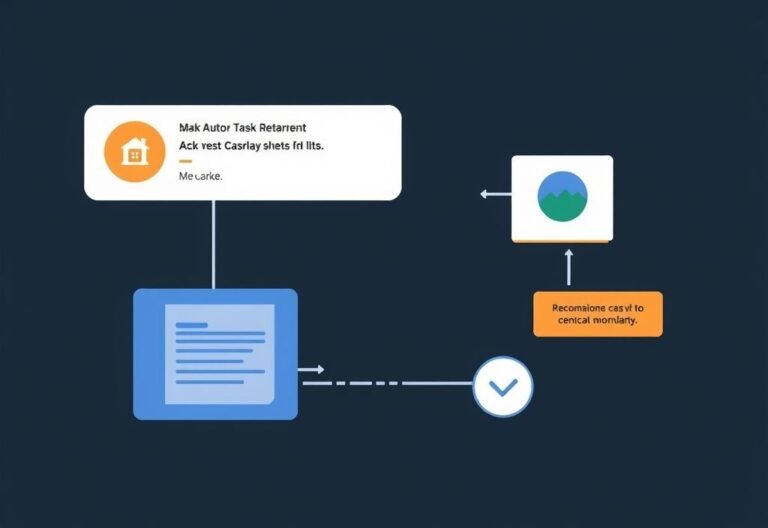
How to Tackle Technical Debt Before It Slows You Down
Remember when your company’s software systems felt fast, clean, and easy to manage?
Now, they might feel more like a tangled mess of patches, workarounds, and outdated code. If this sounds familiar, you’re dealing with technical debt — the hidden cost of quick fixes and delayed upgrades that slow down innovation and increase risk over time.
Like financial debt, technical debt isn’t always bad — sometimes it makes sense to move fast now and fix things later. But when ignored, it becomes a major drag on productivity, security, and long-term growth.
Let’s break down what technical debt really is — and how to tackle it effectively.
What Is Technical Debt?
Technical debt refers to the consequences of choosing short-term solutions over sustainable development practices. Examples include:
- Rushing features to market without proper testing
- Skipping documentation to save time
- Using outdated tools or unsupported frameworks
- Postponing critical system updates
While these shortcuts may help meet deadlines today, they come with a cost tomorrow — slower performance, higher maintenance costs, and increased vulnerability to security threats.
Why It Matters for Your Business
Unmanaged technical debt can quietly sabotage your operations in several ways:
- Development teams take longer to deliver new features
- System crashes and bugs become more frequent
- Onboarding new developers takes more time and effort
- Security risks go unnoticed until it’s too late
- Innovation slows as teams spend more time fixing than building
In short: if you don’t address technical debt, it will eventually hold your business back.
8 Practical Strategies to Reduce Technical Debt
1. Identify and Prioritize
Start by conducting a technical debt audit across your infrastructure and software systems.
- Document where shortcuts were taken or systems have degraded
- Categorize issues by severity, impact, and urgency
- Create a technical debt register to track progress over time
Focus first on high-impact areas — those affecting performance, security, or customer experience.
2. Integrate Debt Management into Your Workflow
Make technical debt part of your regular development process rather than an afterthought.
- Include refactoring tasks in sprint planning and retrospectives (especially if you use Agile)
- Dedicate time each month or quarter to address known issues
- Use metrics to measure progress and highlight improvements
This ensures small problems don’t grow into big ones.
3. Invest in Team Education
Empower your team with the knowledge to avoid creating new debt.
- Train developers on best coding practices and architectural principles
- Promote awareness of how poor decisions today affect future scalability
- Encourage knowledge sharing through internal workshops or pair programming
A well-informed team is your first line of defense against accumulating more debt.
4. Improve Documentation
Good documentation helps everyone understand how systems work — and why they need updating.
- Document architecture, configurations, and key workflows
- Keep documentation updated as changes are made
- Use standardized templates so new team members can get up to speed quickly
Clear documentation reduces confusion and speeds up troubleshooting.
5. Schedule Regular Updates and Refactoring
Don’t wait for systems to break before improving them.
- Plan regular maintenance windows to refactor code and update dependencies
- Focus on the most frequently used or mission-critical parts of your system
- Make improvements incrementally — small changes are easier to test and deploy
This proactive approach keeps your systems lean and adaptable.
6. Strengthen Security Practices
Security and technical debt often go hand-in-hand. Outdated libraries, weak protocols, and unpatched systems create vulnerabilities.
- Automate security monitoring and alerting
- Implement strong encryption and access controls
- Schedule regular penetration tests and audits
By integrating security into your debt reduction plan, you reduce both risk and future rework.
7. Manage Dependencies Wisely
Third-party tools and libraries make development faster — but outdated or poorly managed dependencies add to your technical debt.
- Track all dependencies in use and check for updates regularly
- Use dependency management tools to automate version control
- Isolate critical components to minimize the impact of breaking changes
This ensures your system remains compatible and secure over time.
8. Build a Culture of Continuous Improvement
Reducing technical debt isn’t just about tools and processes — it’s also about mindset.
- Encourage learning and experimentation within your team
- Celebrate wins when technical debt is successfully reduced
- Reward proactive thinking that prioritizes long-term quality over short-term speed
When improvement becomes part of your culture, managing technical debt becomes second nature.
Partner with Experts Who Think Long-Term
Tackling technical debt requires strategy, discipline, and foresight. At [Your Company Name], we believe in doing things right the first time — helping you build systems that scale, stay secure, and support your business goals.
Our team specializes in identifying and resolving technical debt before it becomes a roadblock to innovation.
📞 Contact us today to schedule a consultation and start turning your tech challenges into opportunities.





